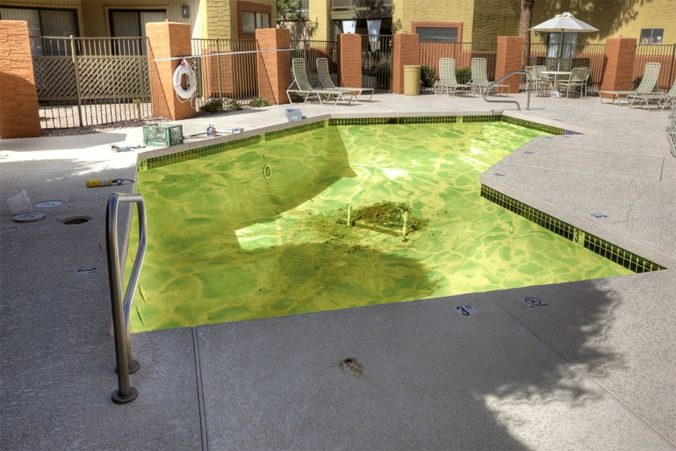It’s no secret that pee finds its way into swimming pools. In fact, the typical residential pool contains about two gallons of urine. What’s worse, there are other, more alarming contaminants lurking in the depths, and pee in the pool could be making the problem worse.
Pools are vulnerable to all the biological and chemical contaminants swimmers bring with them: sweat, saliva, lotion, sunscreen, hair, makeup, gel, oil, skin cells, bacteria and, of course, urine. Disinfectants like chlorine are added to the water to keep it safe and free of viruses, bacteria and other pathogens.
Chlorine kills or deactivates the pathogens, but other contaminants can combine with it to form toxic disinfection byproducts, such as chloroform. Scientists have identified more than 600 different disinfection byproducts, and many have been linked to cancer and harm to the developing fetus. As with many other toxic chemicals, disinfection byproducts can pose a particular risk to children, and exposure for children is often much greater than for adults.
The Environmental Protection Agency has set a legal limit for two groups of disinfection byproducts in drinking water – 80 parts per billion, or ppb, for trihalomethanes and 60 ppb for haloacetic acids. Yet no such regulations exist for swimming pools.
In contrast to drinking water, residual chlorine and disinfection byproducts in swimming pool water cannot be completely filtered out, because filters that remove the byproducts would also remove the chlorine. The water must always contain a low level of disinfectant to ensure it is not re-contaminated with pathogens whenever anyone enters the pool.
Source: EWG, from EWG’s Tap Water Database and studies cited below
